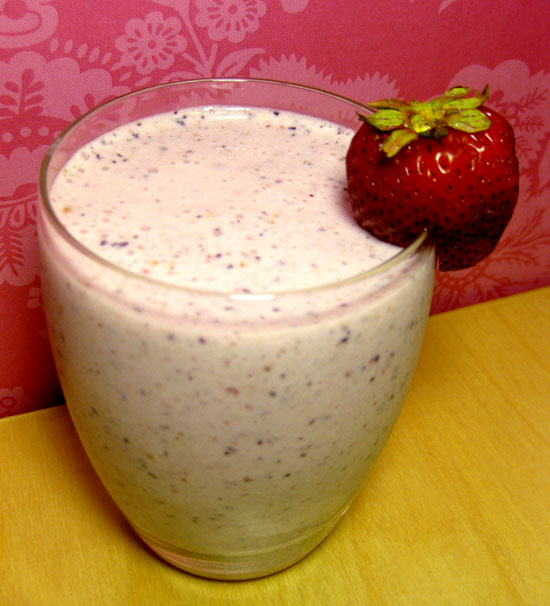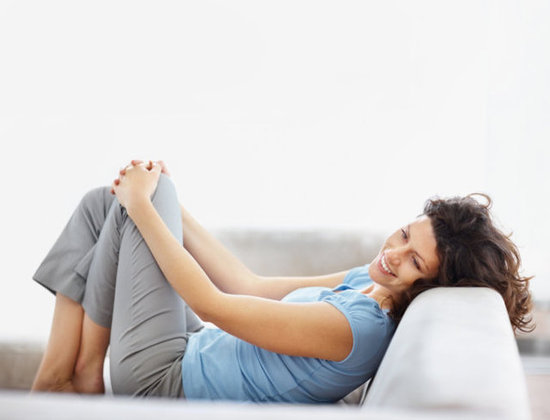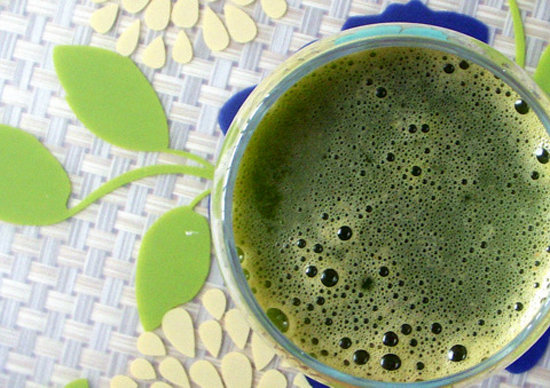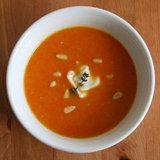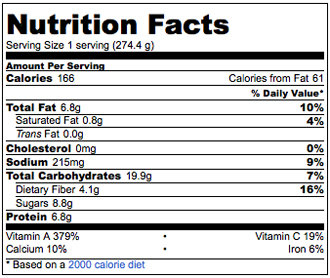Migraine
Definition
By Mayo Clinic staff
A migraine headache can cause intense throbbing or pulsing in one area of the head and is commonly accompanied by nausea, vomiting, and extreme sensitivity to light and sound. Migraine attacks can cause significant pain for hours to days and be so severe that all you can think about is finding a dark, quiet place to lie down.
Some migraines are preceded or accompanied by sensory warning symptoms (aura), such as flashes of light, blind spots or tingling in your arm or leg. Medications can help reduce the frequency and severity of migraines. If treatment hasn't worked for you in the past, talk to your doctor about trying a different migraine headache medication. The right medicines, combined with self-help remedies and lifestyle changes, may make a tremendous difference.
Symptoms
Migraine headaches often begin in childhood, adolescence or early adulthood. Migraines may progress through four stages — prodrome, aura, attack and postdrome — though you may not experience all the stages.
Prodrome
One or two days before a migraine, you may notice subtle changes that may signify an oncoming migraine, including:
- Constipation
- Depression
- Diarrhea
- Food cravings
- Hyperactivity
- Irritability
- Neck stiffness
Most people experience migraine headaches without aura. Auras are usually visual but can also be sensory, motor or verbal disturbances. Each of these symptoms typically begins gradually, builds up over several minutes, then commonly lasts for 10 to 30 minutes. Examples of aura include:
- Visual phenomena, such as seeing various shapes, bright spots or flashes of light
- Vision loss
- Pins and needles sensations in an arm or leg
- Speech or language problems
Attack
When untreated, a migraine typically lasts from four to 72 hours, but the frequency with which headaches occur varies from person to person. You may have migraines several times a month or much less frequently. During a migraine, you may experience some of the following symptoms:
- Pain on one side of your head
- Pain that has a pulsating, throbbing quality
- Sensitivity to light, sounds and sometimes smells
- Nausea and vomiting
- Blurred vision
- Diarrhea
- Lightheadedness, sometimes followed by fainting
The final phase — known as postdrome — occurs after a migraine attack, when you may feel drained and washed out, though some people report feeling mildly euphoric.
When to see a doctor
Migraine headaches are often undiagnosed and untreated. If you regularly experience signs and symptoms of migraine attacks, keep a record of your attacks and how you treated them. Then make an appointment with your doctor to discuss your headaches and decide on a treatment plan.
Even if you have a history of headaches, see your doctor if the pattern changes or your headaches suddenly feel different.
See your doctor immediately or go to the emergency room if you have any of the following signs and symptoms, which may indicate other, more serious medical problems:
- An abrupt, severe headache like a thunderclap
- Headache with fever, stiff neck, rash, mental confusion, seizures, double vision, weakness, numbness or trouble speaking
- Headache after a head injury, especially if the headache gets worse
- A chronic headache that is worse after coughing, exertion, straining or a sudden movement
- New hea
- New headache pain if you're older than 50
Causes
Although much about the cause of migraines isn't understood, genetics and environmental factors seem to both play a role.Migraines may be caused by changes in the brainstem and its interactions with the trigeminal nerve, a major pain pathway. Imbalances in brain chemicals, including serotonin — which helps regulate pain in your nervous system — also may be involved.
Serotonin levels drop during migraine attacks. This may trigger your trigeminal system to release substances called neuropeptides, which travel to your brain's outer covering (meninges). The result is headache pain.
Migraine headache triggers
Whatever the exact mechanism of the headaches, a number of things may trigger them. Common migraine triggers include:
- Hormonal changes in women. Fluctuations in estrogen seem to trigger headaches in many women with known migraines. Women with a history of migraines often report headaches immediately before or during their periods, when they have a major drop in estrogen. Others have an increased tendency to develop migraines during pregnancy or menopause. Hormonal medications — such as oral contraceptives and hormone replacement therapy — also may worsen migraines, though some women find it's beneficial to take them.
- Foods. Some migraines appear to be triggered by certain foods. Common offenders include alcohol, especially beer and red wine; aged cheeses; chocolate; aspartame; overuse of caffeine; monosodium glutamate — a key ingredient in some Asian foods; salty foods; and processed foods. Skipping meals or fasting also can trigger migraine attacks.
- Stress. Stress at work or home can instigate migraines.
- Sensory stimuli. Bright lights and sun glare can induce migraines, as can loud sounds. Unusual smells — including pleasant scents, such as perfume, and unpleasant odors, such as paint thinner and secondhand smoke — can also trigger migraines.
- Changes in wake-sleep pattern. Either missing sleep or getting too much sleep may serve as a trigger for migraines in some individuals, as can jet lag.
- Physical factors. Intense physical exertion, including sexual activity, may provoke migraines.
- Changes in the environment. A change of weather or barometric pressure can prompt a migraine.
- Medications. Certain medications can aggravate migraines, especially oral contraceptives and vasodilators, such as nitroglycerin.
Risk factors
Several factors make you more prone to having migraines.- Family history. Up to 90 percent of people with migraines have a family history of migraine attacks. If one or both of your parents have migraines, there's a good chance you will, too.
- Age. Migraine can begin at any age, though most people experience their first migraine during adolescence. By age 40, most people with migraine have had their first attack.
- Gender. Women are three times more likely to have migraines. Headaches tend to affect boys more than girls during childhood, but by the time of puberty, more girls are affected.
- Hormonal changes. If you're a woman who has migraines, you may find that your headaches begin just before or shortly after onset of menstruation. They may also change during pregnancy or menopause. Some women report that their migraine attacks got worse during the first trimester of a pregnancy, though for many, the attacks improved during later stages in the pregnancy.
Complications
Sometimes your efforts to control your pain cause problems.- Abdominal problems. Certain pain relievers, such as ibuprofen (Advil, Motrin, others), may cause abdominal pain, bleeding and ulcers — especially if taken in large doses or for a long period of time.
- Rebound headaches. In addition, if you take over-the-counter or prescription headache medications more than nine days per month or in high doses, you may be setting yourself up for a serious complication known as rebound headaches. Rebound headaches occur when medications not only stop relieving pain, but actually begin to cause headaches. You then use more pain medication, which traps you in a vicious cycle.
- Serotonin syndrome. This potentially life-threatening drug interaction can occur if you take migraine medicines called triptans, such as sumatriptan (Imitrex) or zolmitriptan (Zomig), along with antidepressants known as selective serotonin reuptake inhibitors (SSRIs) or serotonin-norepinephrine reuptake inhibitors (SNRIs). Some common SSRIs include Zoloft, Prozac and Paxil. SNRIs include Cymbalta and Effexor. Fortunately, serotonin syndrome is rare.
Preparing for your appointment
You're likely to start by seeing your primary care provider, but you may be referred to a physician who specializes in headache (neurologist).Because appointments can be brief, and because there's often a lot of ground to cover, it's a good idea to be well-prepared for your appointment. Here's some information to help you get ready for your appointment, and what to expect from your doctor.
What you can do
- Write down symptoms you're experiencing, even if they seem unrelated to your migraines.
- Write down key personal information, including any major stresses or recent life changes.
- Make a list of all medications, vitamins or supplements you're taking. It is particularly important to list all medications that you have used to treat your headaches. Include the dosages of the medications.
- Take a family member or friend along, if possible. Sometimes it can be difficult to soak up all the information provided to you during an appointment. Someone who accompanies you may remember something that you missed or forgot.
- Write down questions to ask your doctor.
- What is likely triggering my migraine headaches?
- Are there other possible causes for my symptoms?
- What kinds of tests do I need?
- Is my condition likely temporary or chronic?
- What is the best course of action?
- What are the alternatives to the primary approach that you're suggesting?
- What changes to my lifestyle or diet do you suggest I make?
- I have these other health conditions. How can I best manage them together?
- Is there a generic alternative to the medicine you're prescribing for me?
- Are there any brochures or other printed material that I can take home with me? What websites do you recommend?
What to expect from your doctor
Your doctor is likely to ask you a number of questions. Being ready to answer them may reserve time to go over any points you want to spend more time on. Your doctor may ask:
- When did you first begin experiencing symptoms?
- Have your symptoms been continuous or occasional?
- How severe are your symptoms?
- What, if anything, seems to improve your symptoms?
- What, if anything, appears to worsen your symptoms?
- Keep a headache diary. A diary can help you and your doctor determine what triggers your migraines. Note when your headaches start, how long they last and what, if anything, provides relief. Be sure to record your response to any headache medications you take. Also note the foods you ate in the 24 hours preceding attacks, any unusual stress, and how you feel and what you're doing when headaches strike.
- Reduce stress. Because stress triggers migraines for many people, try to avoid overly stressful situations, or use stress-reduction techniques like meditation.
- Get enough sleep but don't oversleep. Aim for six to eight hours of sleep a night.
Tests and diagnosis
If you have typical migraines or a family history of migraine headaches, your doctor will likely diagnose the condition on the basis of your medical history and a physical exam. But if your headaches are unusual, severe or sudden, your doctor may recommend a variety of tests to rule out other possible causes for your pain.- Computerized tomography (CT). This imaging procedure uses a series of computer-directed X-rays that provides a cross-sectional view of your brain. This helps doctors diagnose tumors, infections and other possible medical problems that may be causing your headaches.
- Magnetic resonance imaging (MRI). MRIs use radio waves and a powerful magnet to produce very detailed cross-sectional views of your brain. MRI scans help doctors diagnose tumors, strokes, aneurysms, neurological diseases and other brain abnormalities. An MRI can also be used to examine the blood vessels that supply the brain.
- Spinal tap (lumbar puncture). If your doctor suspects an underlying condition, such as meningitis — an inflammation of the membranes (meninges) and cerebrospinal fluid surrounding your brain and spinal cord — he or she may recommend a spinal tap (lumbar puncture). In this procedure, a thin needle is inserted between two vertebrae in your lower back to extract a sample of cerebrospinal fluid (CSF) for laboratory analysis.
Treatments and drugs
A variety of drugs have been specifically designed to treat migraines. In addition, some drugs commonly used to treat other conditions also may help relieve or prevent migraines. Medications used to combat migraines fall into two broad categories:- Pain-relieving medications. Also known as acute or abortive treatment, these types of drugs are taken during migraine attacks and are designed to stop symptoms that have already begun.
- Preventive medications. These types of drugs are taken regularly, often on a daily basis, to reduce the severity or frequency of migraines.
Some medications aren't recommended if you're pregnant or breast-feeding. Some aren't used for children. Your doctor can help find the right medication for you.
Pain-relieving medications
For best results, take pain-relieving drugs as soon as you experience signs or symptoms of a migraine. It may help if you rest or sleep in a dark room after taking them:
- Pain relievers. These medications, such as ibuprofen (Advil, Motrin, others) or acetaminophen (Tylenol, others) may help relieve mild migraines. Drugs marketed specifically for migraines, such as the combination of acetaminophen, aspirin and caffeine (Excedrin Migraine), also may ease moderate migraine pain but aren't effective alone for severe migraines. If taken too often or for long periods of time, these medications can lead to ulcers, gastrointestinal bleeding and rebound headaches. The prescription pain reliever indomethacin may help thwart a migraine headache and is available in suppository form, which may be helpful if you're nauseous.
- Triptans. For many people with migraine attacks, triptans are the drug of choice. They are effective in relieving the pain, nausea, and sensitivity to light and sound that are associated with migraines. Medications include sumatriptan (Imitrex), rizatriptan (Maxalt), almotriptan (Axert), naratriptan (Amerge), zolmitriptan (Zomig), frovatriptan (Frova) and eletriptan (Relpax). Side effects of triptans include nausea, dizziness and muscle weakness. They aren't recommended for people at risk for strokes and heart attacks. A single-tablet combination of sumatriptan and naproxen sodium (Treximet) has proved more effective in relieving migraine symptoms than either medication on its own.
- Ergot. Ergotamine and caffeine combination drugs (Migergot, Cafergot) are much less expensive, but also less effective, than triptans. They seem most effective in those whose pain lasts for more than 48 hours. Dihydroergotamine (D.H.E. 45, Migranal) is an ergot derivative that is more effective and has fewer side effects than ergotamine. It's also available as a nasal spray and in injection form.
- Anti-nausea medications. Because migraines are often accompanied by nausea, with or without vomiting, medication for nausea is appropriate and is usually combined with other medications. Frequently prescribed medications are metoclopramide (Reglan) or prochlorperazine (Compro).
- Opiates. Medications containing narcotics, particularly codeine, are sometimes used to treat migraine headache pain when people can't take triptans or ergot. Narcotics are habit-forming and are usually used only as a last resort.
- Dexamethasone. This corticosteroid may be used in conjunction with other medication to improve pain relief. Because of the risk of steroid toxicity, dexamethasone should not be used frequently.
Preventive medications
You may be a candidate for preventive therapy if you have two or more debilitating attacks a month, if pain-relieving medications aren't helping, or if your migraine signs and symptoms include a prolonged aura or numbness and weakness.Preventive medications can reduce the frequency, severity and length of migraines and may increase the effectiveness of symptom-relieving medicines used during migraine attacks. Your doctor may recommend that you take preventive medications daily, or only when a predictable trigger, such as menstruation, is approaching.
In most cases, preventive medications don't eliminate headaches completely, and some cause serious side effects. If you have had good results from preventive medicine and have been migraine-free for six months to a year, your doctor may recommend tapering off the medication to see if your migraines return without it.
For best results, take these medications as your doctor recommends:
- Cardiovascular drugs. Beta blockers — commonly used to treat high blood pressure and coronary artery disease — can reduce the frequency and severity of migraines. The beta blocker propranolol (Inderal La, Innopran XL, others) has proved effective for preventing migraines. Calcium channel blockers, another class of cardiovascular drugs, especially verapamil (Calan, Verelan, others), also may be helpful in preventing migraines and relieving symptoms from aura. In addition, the antihypertensive medication lisinopril (Zestril) has been found useful in reducing the length and severity of migraines. Researchers don't understand exactly why these cardiovascular drugs prevent migraine attacks. Side effects can include dizziness, drowsiness or lightheadedness.
- Antidepressants. Certain antidepressants are good at helping to prevent some types of headaches, including migraines. Tricyclic antidepressants, such as amitriptyline, nortriptyline (Pamelor) and protriptyline (Vivactil) are often prescribed for migraine prevention. Tricyclic antidepressants may reduce migraine headaches by affecting the level of serotonin and other brain chemicals, though amitriptyline is the only one proved to be effective for migraine headaches. You don't have to have depression to benefit from these drugs. Other classes of antidepressants called selective serotonin reuptake inhibitors (SSRIs) and serotonin-norepinephrine reuptake inhibitors (SNRIs) haven't been proved as effective for migraine headache prevention. However, preliminary research suggests that one SNRI, venlafaxine (Effexor, Venlafaxine HCL), may be helpful in preventing migraines.
- Anti-seizure drugs. Some anti-seizure drugs, such as valproate (Depacon), topiramate (Topamax) and gabapentin (Neurontin), seem to reduce the frequency of migraines. Lamotrigine (Lamictal) may be helpful if you have migraines with aura. In high doses, however, these anti-seizure drugs may cause side effects, such as nausea and vomiting, diarrhea, cramps, hair loss, and dizziness.
- Cyproheptadine. This antihistamine specifically affects serotonin activity. Doctors sometimes give it to children as a preventive measure.
- Botulinum toxin type A (Botox). The FDA has approved botulinum toxin type A for treatment of chronic migraine headaches in adults. During this procedure, injections are made in muscles of the forehead and neck. When this is effective, the treatment typically needs to be repeated every 12 weeks.
Lifestyle and home remedies
Self-care measures can help ease the pain of a migraine headache.- Try muscle relaxation exercises. Progressive muscle relaxation, meditation and yoga don't require any equipment. You can learn them in classes or at home using books or tapes. Or spend at least a half-hour each day doing something you find relaxing — listening to music, gardening, taking a hot bath or reading.
- Get enough sleep, but don't oversleep. The average adult needs six to eight hours of sleep a night. It's best to go to bed and wake up at regular times, as well.
- Rest and relax. If possible, rest in a dark, quiet room when you feel a headache coming on. Place an ice pack wrapped in a cloth on the back of your neck and apply gentle pressure to painful areas on your scalp.
- Keep a headache diary. Continue keeping your headache diary even after you see your doctor. It will help you learn more about what triggers your migraines and what treatment is most effective.
Alternative medicine
Nontraditional therapies may be helpful if you have chronic migraine pain:- Acupuncture. In this treatment, a practitioner inserts many thin, disposable needles into several areas of your skin at defined points. Clinical trials have found that acupuncture may be helpful for headache pain.
- Biofeedback. Biofeedback appears to be especially effective in relieving migraine pain. This relaxation technique uses special equipment to teach you how to monitor and control certain physical responses related to stress, such as muscle tension.
- Manual therapy. Massage and chiropractic treatments may help reduce the frequency of migraines. And it can improve the quality of your sleep, which can, in turn, help prevent migraine attacks.
- Herbs, vitamins and minerals. There is some evidence that the herbs feverfew and butterbur may prevent migraines or reduce their severity. A high dose of riboflavin (vitamin B-2) also may prevent migraines by correcting tiny deficiencies in the brain cells. Coenzyme Q10 supplements may decrease the frequency of migraines, but they have little effect on the severity of the headache. Due to low magnesium levels in some people with migraines, magnesium supplements have been used, but with mixed results. Ask your doctor if these treatments are right for you. Don't use feverfew or butterbur if you're pregnant.
Prevention
Whether or not you take preventive medications, you may benefit from lifestyle changes that can help reduce the number and severity of migraines. One or more of these suggestions may be helpful for you:- Avoid triggers. If certain foods seem to have triggered your migraines in the past, avoid those foods. If certain scents are a problem, try to avoid them. In general, establish a daily routine with regular sleep patterns and regular meals. In addition, try to control stress.
- Exercise regularly. Regular aerobic exercise reduces tension and can help prevent migraines. If your doctor agrees, choose any aerobic exercise you enjoy, including walking, swimming and cycling. Warm up slowly, however, because sudden, intense exercise can cause headaches. Obesity is also thought to be a factor in migraine headaches, and regular exercise can help you keep your weight down.
- Reduce the effects of estrogen. If you're a woman who has migraines and estrogen seems to trigger or make your headaches worse, you may want to avoid or reduce the medications you take that contain estrogen. These medications include birth control pills and hormone replacement therapy. Talk with your doctor about the best alternatives or dosages for you.
http://www.mayoclinic.com/health/migraine-headache/DS00120














